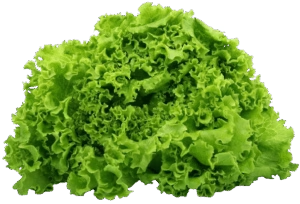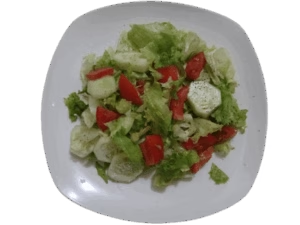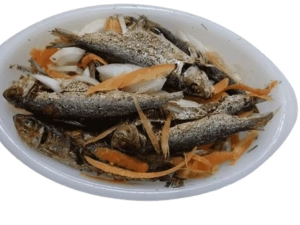TABLE OF CONTENTS
The subject of genetically modified or bioengineered foods has been a controversial topic in grocery aisles and across the globe for years. This is due in part, to the controversy that surrounds its purported impact on one’s health. As such, the recent law that was passed by the Food and Drug Administration (FDA) in the United States, should be of great interest to many countries, including Jamaica.
In Jamaica, it was reported that the total value of food imports in 2020 was Nine Hundred Thirty-two Million Six Hundred Fifty Thousand ($932.65 million), of this amount, about Forty-two (42%) percent were imported from the United States (Trade.gov, 2019). As such, it is safe to suggest that most of Jamaica’s imports are from the United States.
In addition, Jamaica was recently ripped with discussions about having better food labelling standards for products that are manufactured in Jamaica. This, according to the Ministry of Health and Wellness (Jamaica), would help consumers to understand clearly the ingredients and nutritional values of the product to make informed purchasing decisions.
Therefore, with so many changes, both locally and internationally, food labelling might soon appear to be a complicated issue for consumers. As such, the more we know as consumers, the better it will be for us to make the best purchasing decisions for ourselves and our families.
To this extent, it would be imperative, that attention is given to this law to better manage the country’s food supply and provide the necessary public education for manufacturers and consumers alike.
In this article, we are going to review the law which came into effect on January 1, 2022, what it means for us as consumers as a whole as well as what to look out for when shopping the grocery aisles. Let’s discuss!
The Discussion
Genetically Modified Foods (GMO) foods as was the initial labelling, represent those foods that have gone through some form of modification from their natural state. As such, this was the acronym that was used to describe such products for easy identification by consumers.
However, the practice of labelling foods in this category was very controversial, to say the least. This was due in part to what definition was ascribed in certain instances and what would truly qualify a product as being genetically modified.
This new law, according to the United States Food and Drug Administration (FDA), is meant to encourage food and feed manufacturers to properly and truthfully label their product/s that have used ingredients that have been made with or without bioengineering means (FDA.gov.). A direct response by manufacturers to consumers’ interest in this regard.
It must be noted, that this new labelling mechanism only applies to plant-derived food products or ingredients. The FDA’s main role in this activity is to act as a ‘facilitator’ and not necessarily an enforcer of this requirement. Therefore, they will be providing guidance and recommendations to manufacturers and related entities. To this extent, a company that does not label their foods truthfully, will not necessarily be fined, as the FDA guidance does not establish ‘legally enforceable responsibilities’ (FDA.gov).
Under the law, ‘genetic engineering’ or ‘bioengineering’ is used to describe the use of modern biotechnology in the manufacturing of particularly food kind. The term, modern technology, instead of the broad classification that is usually ascribed to genetically modified organisms (GMO), means the use of in vitro nucleic acid technology which includes DNA (recombinant deoxyribonucleic acid) as well as the direct injection of nucleic acid into cells or cells infusion that does not belong to the taxonomic family.
In simple terms, these foods would not have gone through natural physiological means. It also includes techniques not used in traditional breeding and selection of plants (Codex Alimentarius Commission, 2003).
The term ‘modern technology’ may also be referred to as ‘recombinant DNA (rDNA) technology’ (Codex Alimentarius Commission, 2003), ‘genetic engineering’ (National Research Council, 2004) or even ‘bioengineering’. As such, these terms may be used interchangeably at times by other governmental groups or international bodies and interested stakeholders. However, these terminologies all speak to foods that have been derived from plants that have been developed from modern technology.
Notably, you may also see the term ‘genetic modifications’ being used to describe foods of this persuasion. However, the United States Food and Drug Administration (USFDA) discourages the use of this term and views it as inaccurate, as its scope is too far-reaching. To this extent, it recommends the aforementioned terminologies be used.
Therefore, manufacturers and food suppliers must bear in mind, that the information that is on a label is valuable and essential and also the ‘right’ of consumers under the emblem of ‘the right to information.’ That being so, consumers should be enabled to learn about the products or their traits, with ease, avoiding any confusion (Messer et. al. 2015).
To this extent, this article will also explore what foods will be labelled under this new standard, what you should look out for on packages to denote if a product has been derived from bioengineering processes, what should be on the label of products that have not been derived from bioengineering processes, understand how you, as a consumer can validate a manufacturer’s labelling claim and how will this new law be enforced.
Six (6) Things to know about the FDA’s new law on bioengineering Foods:
- What foods will be labelled under this new standard?
- What you should look out for on a package to know if it has been bioengineered?
- What if the product only contains two (2) or more bioengineered ingredients?
- What should be on the label of non-bioengineered products?
- How can you substantiate/validate a manufacturer’s labelling claim?
- How will this new law be enforced?
What foods will be labelled as ‘Bioengineered’ under the new FDA law?
According to the FDA, all foods that apply to human consumption and is subjected to the Federal Food and Drug Cosmetic Act (FD&C Act) – (FDA.gov). However, foods that are primarily comprised of meat such as pork, beef, sheep, goat, chicken, turkey, catfish, birds raised domestically or egg products, would already be labelled under a different category – the Federal Meat Inspection Act (fda.org).
Here are some foods that may be processed or manufactured by bioengineered means – some apples, corn, eggplants, canola oil, soybeans, papayas, potatoes, pineapples etc. According to the FDA, most GMO crops are used for animal feed, but they may sometimes be used in ingredients such as those listed above and even in granulated sugar.
So, what should be on the label for foods that ARE derived from genetically engineered plants?
The FDA recommends that these goods be properly labelled to prevent misleading consumers. As such, manufacturers are encouraged to provide accurate statements about whether the food has been produced using bioengineered means.
Therefore, consumers must look out for statements on the labels of products such as ‘contain a bioengineered ingredient,’ or something to the effect like ‘this product contains cornmeal from corn that was produced using modern biotechnology,’ or a round green label that states ‘bioengineered’ or ‘derived from bioengineering.’
Some products may also have a phone number that the consumer can call or text for more information or even a QR code, that when scanned, will take you to an online source to read the disclosure. Additional information to look out for on products includes “Some of our growers plant soybean seeds that were developed through modern biotechnology to be drought-tolerant.’
Providing such descriptions will render a product as not being ‘misleading.’ Here is a list of foods that are usually bioengineered according to the FDA – List of Bioengineered Foods | Agricultural Marketing Service (usda.gov).
Additionally, the bioengineered food disclosure requirements must be placed on the information panel of the product. It is expected that this panel be adjacent to the name of the manufacturer and distributor (where necessary). Brands may also choose to display this information on the front of the package.
This might be the case in Jamaica, due to the new expected standards (being discussed) for food labelling in general. Having the information placed in this way will allow consumers to see it under regular shopping conditions.
But what if the product only contains two (2) or more ingredients that have been bioengineered and not all of the ingredients?
The law recommends that the product be worded to address the ingredients that are bioengineered or derived through biotechnological means and not the product or food as a whole. For example, ‘this product contains a particular type of canola from bioengineered canola or some of the other examples above about the cornmeal and soy etc.
The manufacturer can also list the percentage of the bioengineered ingredients on the product to prevent any misleading statements. In addition, manufacturers can also denote the overall benefits of the food, if a small amount of the ingredient is bioengineered. What benefits will the consumer obtain from this bioengineered portion of the ingredients?
Research has shown that such statements could impact the favourability of the product as well as the consumer’s perception of the product as a whole (Refs, Carpenter et. al 1994; Lin, 2008; Roe et. al. 1999).
Additionally, foods derived via bioengineering means may contain allergens that consumers may not generally have initially associated with foods of this nature. As such, manufacturers must disclose the presence of the allergen/s on the product label as well.
So, what should be on the label for foods that are NOT derived from genetically engineered plants?
It is recommended that manufacturers disclose if a product is derived using bioengineering means, and be truthful and not provide misleading information. As such, if the food does not have any genetically modified ingredients, it should be clearly stated on the label. Therefore, consumers should check the product to see if it contains any of these statements:
- Not bioengineered.
- Not genetically engineered.
- Not genetically modified.
- Not genetically modified through the use of modern biotechnology.
- We do not use ingredients that were produced using modern biotechnology.
- This oil is made from soybeans that were not genetically engineered.
- Our corn growers do not plant bioengineered seeds.
(Ref: fda.gov/ https://www.fda.gov/FoodGuidances).
Please note, that if a product does not have any of these statements, that does not necessarily mean that it is free of genetically modified ingredients as these are voluntary requirements. This is due to the fact, that only genetic materials that are ‘detectable’ will be labelled as being ‘genetically modified or derived through bioengineering means.
Therefore, if a product that has been made from bioengineered crops, but say, is drastically processed that no DNA remains, then that food may not be ‘voluntarily’ labelled as bioengineered or genetically modified. However, the product would be considered misleading under the new law. But, how will consumers know? That is still a cause of great concern.
How can you validate a manufacturer’s labelling claims?
The law recommends that manufacturers substantiate their claims by being specific about the methods used for their products. As such, they can provide ‘documentation of handling practices and procedures if they have control over all aspects of the product development such as – growing, harvesting, storing, distribution etc.
This type of documentation should be something that the manufacturer should have in his/her position whether the food is bioengineered or not. This can help with the integrity of the manufacturing process and thus provide proof that the labelling is not false or misleading.
Another way a manufacturer can prove a product’s validity is to have proper certification of the foods, especially, if the food is stated to be ‘organic.’ As such, the product should meet the established criteria for such categorization by law which would indicate that the product has not been produced or handled using any bioengineering means.
The use of what is known as ‘validated test methods’ may also be used where applicable to confirm or refute the presence of bioengineered materials. This will help to confirm the reliability of either a food being bioengineered or not. However, it may be difficult to cite this means to validate if a product has any bioengineered materials or is derived from genetically engineered plants or ingredients.
This is because some products may also require many tests, which may be challenging for some manufacturers, particularly smaller ones. Therefore, proper record-keeping requirements will become even more crucial not only for the manufacturer but also for importers, retailers and consumers to validate a product claim.
How will this rule be enforced?
As indicated, the FDA will act as a facilitator and guide as it relates to this ‘voluntary’ labelling requirement. As such, the only reprieve for consumers would be to file a written complaint with the United States Department of Agriculture (USDA) Marketing Services, or other regulating bodies per your country if the food is imported from the United States or another country. If a brand is investigated and found to be in breach of the guidelines, then it may be made liable.
Illustrative Summary
Here is a summary of the Six (6) Things to know about the FDA’s new rule on BIOENGINEERING FOODS
Let’s Sum Up!
Bioengineered foods or what was broadly categorized as Genetically Modified Organisms (GMO) foods have been a controversial subject matter over the years. This new FDA law, which came into effect in January 2022, is not expected to see a cessation of the debates, but might even amplify the conversation.
While this rule is now in effect, there is still a lot to be learned and even relearned as these products begin to flood the grocery shopping isles. Therefore, the onus is going to be on us as consumers to learn about the law that surrounds this labelling rule to make better and informed choices personally and for our families. But it is not going to be easy.
As such, this article was written to assist you on that quest as we are all in this thing together – Good health and happy life.
So, whether you live in the United States or Jamaica, we all live in a global marketplace where our food supplies oftentimes travel across both land and sea to our grocery aisles and eventually, our homes. Therefore, it is always good to know about laws of this nature, sooner, rather than later.
So, what are your thoughts on this new rule? Have you seen any labelling upgrades for your favourite products or a new product you were planning to try out? Share it nuh!
You can read more on this new rule here:
You can also read in detail about our foods and their many nutrients in this post. You can also download your free Vitamin Guide here as well. While you are doing so, do not forget to learn about the recent ban on red dye No. 3 in foods.
Editor’s Note: This rrticle was last updated on February 5, 2025.
- Carpenter, G.S., Glazer, R., and Nakamoto, K. (1994). “Meaningful brands from meaningless differentiation: the dependence on irrelevant attributes.” Journal of Marketing Research 31: 229-350.
- Codex Alimentarius Commission. 2003. Amendments in 2008, 2011. “Principles for the Risk Analysis of Foods Derived From Modern Biotechnology CAC/GL 44-2003.” http://www.codexalimentarius.net/download/standards/10007/CXG_044e.pdf.
- Codex Alimentarius Commission. 2003. Amendments in 2008. “Guideline for the Conduct of Food Safety Assessment of Foods Derived from Recombinant-DNA Plants CAC/GL 45-2003” http://www.codexalimentarius.net/download/standards/10021/CXG_045e.pdf.
- Lin, C.-T J (2008) “How do consumers interpret health messages on food labels?” Nutrition Today 43(6) 267-272.
- Messer, K. D., Bligh, S., Costanigro, M., and Kaiser, H. M. (2015). Process labeling of food : consumer behavior, the agricultural sector, and policy recommendations. Counc. Agric. Sci. Technol. CAST 10, 1–16. OECD and FAO (2015). OECD-FAO Agricultural Outlook 2015-2024. Paris: OECD Publishing.
- National Research Council. Safety of Genetically Engineered Foods: Approaches to Assessing Unintended Health Effects. Washington, DC: The National Academies Press, 2004. 1; ix and 194. http://www.nap.edu/openbook.php?record_id=10977&page=R1.
- Roe, B, Levy, A.S. and Derby, B.M. (1999). “The impacts of health claims on consumer search and product evaluation outcomes: results from FDA experimental data.” Journal of Public Policy and Marketing 18 (1); 89-105.





